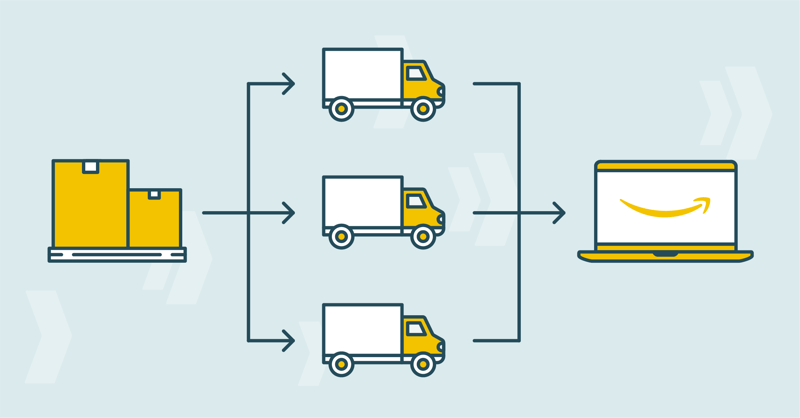
Many brands are tempted to apply a traditional retail model to their Amazon strategy: the more stores your product is in, the more you’ll sell. However, applying this logic on Amazon is one of the biggest mistakes a brand can make.
Having multiple selling partners on Amazon can cause:
This is an issue we see brands face (and help brands tackle) all the time here at SupplyKick—so we thought it was time to share this post with the world. Below, we break down the ripple effect multiple Amazon sellers can have on your brand reputation, revenue, and retail relationships.
When a brand allows multiple sellers to sell their products on Amazon, it can seem like smooth sailing at first—until it’s not. This can cause a somewhat vicious cycle for the brand and everyone involved, including your Amazon customers.
We break this lifecycle into five key stages:

|
A brand sells its product to multiple Amazon sellers (for some, Amazon 1P being one of them). The brand believes the more selling partners it has, the more opportunity there is to maximize sales. But more selling partners doesn’t increase sales on Amazon, it just splits product sales across multiple sellers. Having multiple sellers also makes it hard to regularly monitor adherence to MAP policies and recognize unauthorized sellers.
|
Each seller creates an internal product listing. However, Amazon selects only one listing to display to the customer. While all sellers appear on a single listing, each seller is able to determine their own sale price and level of effort placed in managing the listing’s quality.
This can lead to inconsistent and subpar photography, creative, messaging, and keyword optimization. A lack of brand consistency sacrifices product legitimacy and consumer trust in your brand. In a recent SupplyKick survey, we found that 85% of Amazon consumers are skeptical of sketchy or unknown brands on Amazon, so it’s important to avoid this at all costs.
|
Within the product page, multiple 3P sellers are reduced to compete on price to become the primary seller. This results in a price war for Amazon’s Buy Box and devalues the product.
|
Sellers can no longer run effective ad campaigns, as their advertisements are diluted when they do not own the Buy Box. The reduced margin lowers the amount each seller is willing to spend on advertisements, if any. Sales decline as fewer shoppers reach the product listing.
|
Other ecommerce marketplaces and retail channels, both physical and digital, notice a reduction in sell price on Amazon and ask for a better cost, threatening to leave the brand altogether. In an effort to regain control of its distribution network and increase sales, the brand adds more sellers and lowers their cost.
As you can see, multiple sellers on Amazon sounds appealing at first, but ultimately, it’s a trap. Break the cycle and team up with one seller instead. It’s the single greatest thing you can do to achieve long-term success and consistent growth on Amazon (and other ecommerce marketplaces, too).
A single-seller approach on Amazon enables you to:
Most importantly, an exclusive 3P seller allows you to stay in control of your product and brand on the marketplace and beyond. Just be sure you vet your selling partner properly to ensure they not only meet Amazon's seller requirements, but that they share the same values, goals, collaboration style, and approach as you do.
Looking to consolidate to one Amazon wholesale seller? Want to learn more about the benefits of working with a single, trusted Amazon partner? SupplyKick can help. Learn more about our Wholesale partnerships and contact our team here.

Lorem ipsum dolor sit amet, consectetur adipiscing elit


Sign up to receive our newsletter for growth strategies, important updates, inventory and policy changes, and best practices.
These Stories on SupplyKick
For press inquiries, please contact Molly Horstmann, mhorstmann@supplykick.com